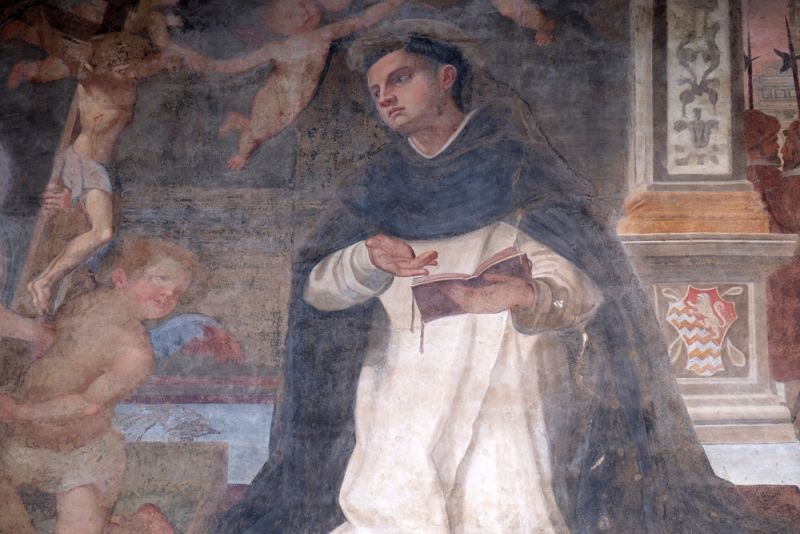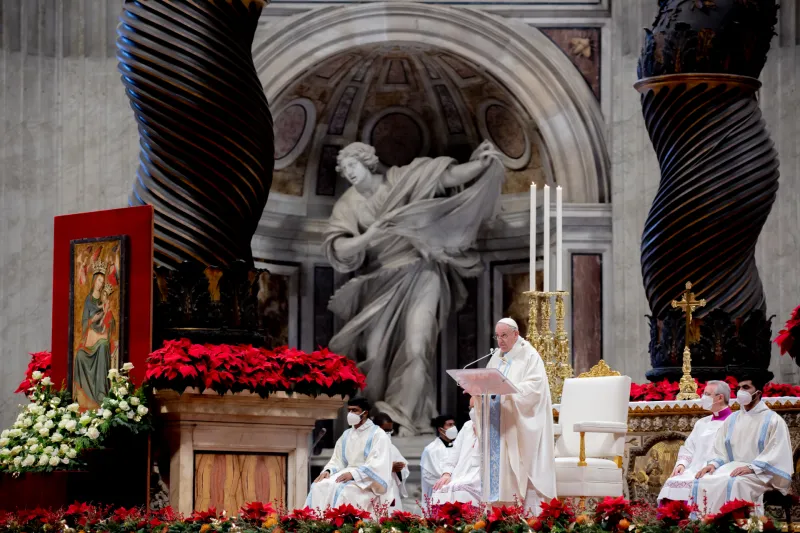
ACI Prensa Staff, Jan 28, 2024 / 04:00 am (CNA).
Every Jan. 28, the Church celebrates St. Thomas Aquinas — doctor of the Church, patron saint of students, distinguished philosopher and theologian, and author of the monumental “Summa Theologica.”
St. Thomas holds several titles: “angelic doctor,” “common doctor,” and “doctor of humanity” — nicknames tradition has given him that reflect the magnitude of his thought and the impact of his work. Today, he remains a point of reference for those who study philosophy and theology and anyone who wishes to be well-grounded in the classical western tradition.
Thomas’ thought, moved by an authentic love for truth, is characterized by his keen and penetrating spirit. As a result, his work lay the foundations of what we understand today as “theological science” or “systematic theology,” marking forever the path that would follow the dialogue and exchange between faith and reason, belief and knowledge, theology and philosophy.
Friend of truth
Thomas Aquinas was born in Roccasecca, near Aquinas, Naples, in 1225. He did his early studies with the monks of the Benedictine monastery of Montecassino, located near the castle belonging to his parents. He went to study at the University of Naples, where he stood out for his sharp intelligence.
When Thomas came into contact with the newly formed Order of Preachers (the Dominicans), he wanted to join the order; however, he encountered fierce opposition from his family. His parents did not agree that the brilliant young man should be part of a mendicant order, which at that time lacked prestige.
Thomas then fled to Germany but was intercepted on the way and seized by his own brothers, who took him back to Roccasecca and locked him up in the family castle. There, the future theologian remained a prisoner, locked up for two years, during which time he devoted himself to the study of sacred Scripture, philosophy, and theology.
His brothers, seeing that Thomas did not give up his intention of becoming a religious, brought a prostitute into his cell to break his will. The saint, however, did not succumb.
Finally released from his imprisonment, Thomas moved to Cologne, Germany, where he met the future St. Albert the Great and joined the group of his students.
Thomas’ companions took him for a fool when they saw he was overweight as well as quiet and shy. They nicknamed him “the dumb ox” to make fun of him. One day, a classmate asked Thomas for his notes, which ended up in the hands of Albert. To everyone’s surprise, the master, after reviewing the notes, commented: “You call him ‘the mute ox,’ but this ox will one day fill the whole world with his mooing.”
Along with his intelligence, Thomas’ heart was full of devotion. He used to spend a lot of time in prayer and recollection expressing his great love for the Eucharist. He graduated as a doctor of theology from the University of Paris and at the age of 27 became a teacher.
Servant and teacher
Dedicated to study and teaching, Thomas thought there was need for a systematic work in which the main themes concerning God would be developed and clarified in a didactic way. This prompted him to begin a detailed compendium, which he called the “Summa Theologica.” It became his most important work.
The “Summa” is composed of 14 volumes in which the philosophical, theological, and scientific knowledge of his time — with a marked influence of great Greek philosophers such as Aristotle — converge. This work would become, centuries later, one of the main texts consulted during the Council of Trent and would initiate an explosion of commentaries, developments, and reflections that continue today.
The thought of St. Thomas Aquinas, therefore, is considered the pinnacle of “scholasticism” — the cultural movement to which Thomas belonged — and of all Christian doctrine.
A key part of the development of the “Summa Theologica” are the “five ways to demonstrate the existence of God” (classified as “proofs”), in which Thomas argues in favor of reason as a faculty capable of affirming, with certainty, that God exists; and that it is possible to know him, at least incipiently, in a rational way from nature as an effect or creation.
In love with Christ
St. Thomas Aquinas is usually recognized for his intellectual greatness, but he is not always recognized for his piety or prayerfulness. But it was he who composed the Eucharistic hymns “Pange Lingua” and “Tantum Ergo” as well as other chants incorporated into the liturgical tradition. Both hymns were commissioned by the pope for the feast of Corpus Christi. Likewise, it is generally forgotten that his devotion to the Virgin Mary was such that in his notebooks he always wrote “Hail Mary” and to her he dedicated a treatise on the Hail Mary prayer.
A certain tradition holds that Jesus Christ appeared to him and said: “Thomas, you have spoken well of me, what do you want in return?” To which St. Thomas replied: “Lord, the only thing I want is to love you, to love you very much, and to please you more and more.”
At the end of his days, Thomas was sent by Pope Gregory X to the Council of Lyons but fell ill on the way. He was received by the Cistercian monastery of Fosanova, where he remained until his death. Before dying, he received the Eucharist and said: “Now I receive you, my Jesus, who paid with your blood the price for the redemption of my soul. All the teachings I have written manifest my faith in Jesus Christ and my love for the holy Catholic Church, of which I profess myself an obedient son.”
St. Thomas Aquinas died 750 years ago, on March 7, 1274, at the age of 49. His body was taken to the Cathedral of Toulouse on Jan. 28 of the following year. He was declared doctor of the Church in 1567.
This story was first published by ACI Prensa, CNA’s Spanish-language news partner. It has been translated and adapted by CNA.
If you value the news and views Catholic World Report provides, please consider donating to support our efforts. Your contribution will help us continue to make CWR available to all readers worldwide for free, without a subscription. Thank you for your generosity!
Click here for more information on donating to CWR. Click here to sign up for our newsletter.






About the realism of Aquinas, and the insight: ““You call him ‘the mute ox,’ but this ox will one day fill the whole world with his mooing.”
Not yet the whole world…
Christianity = the Word made “flesh” (Christ)
Islam = the word made “book” (Qur’an)
Kant/Rahner = the Word made “ideas”
Secular-ism = “words”? “ideas”?
Fiducia Supplicans = moo-ning and a “couple” made 5,000 words
Confucius = “I would restore the meaning of words”